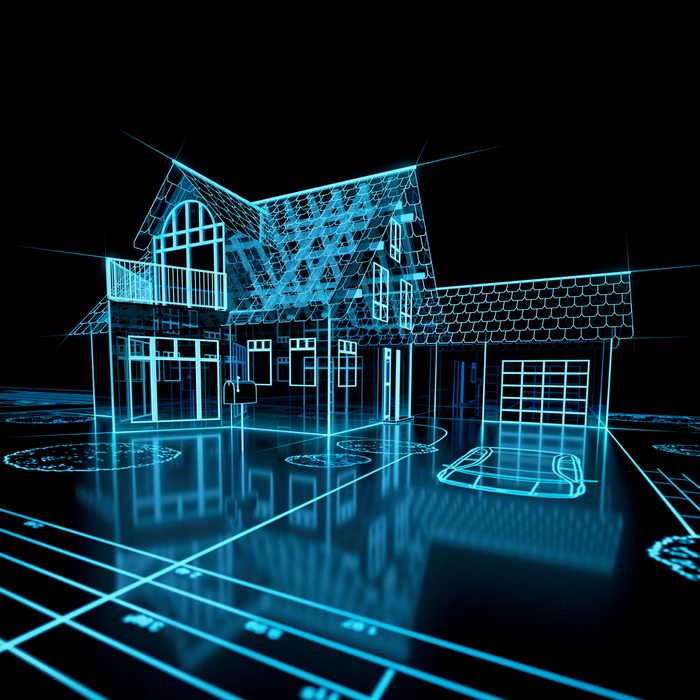
If you’re considering buying a home security system, there’s no better person to consult than an FBI agent or security expert. After all, criminals are smart. Even the safest smart doorbells, and the best diversion safes are often no match for someone truly determined to break into your house.
According to Russell Stuart, managing director of Force Protection Agency, the number one home security item that everyone needs today is a professional surveillance camera system. “Properly positioned cameras throughout your property and inside your home can capture crucial information that can lead to the arrest and prosecution of criminals,” he says.
Your security system also needs to be properly monitored, so they can contact the authorities in the event of a break-in or emergency. “You can have a $5,000 super system […] but if it’s being monitored by a knucklehead company, it’s useless,” says Thomas G. Martin, private investigator and former federal agent.
Martin also says that many homeowners fail to arm their systems when they leave the house or go to bed. Under these circumstances, even the best home security systems will fail.
Are you ready to make your home safer? Here find the best home security systems for apartments or larger homes.
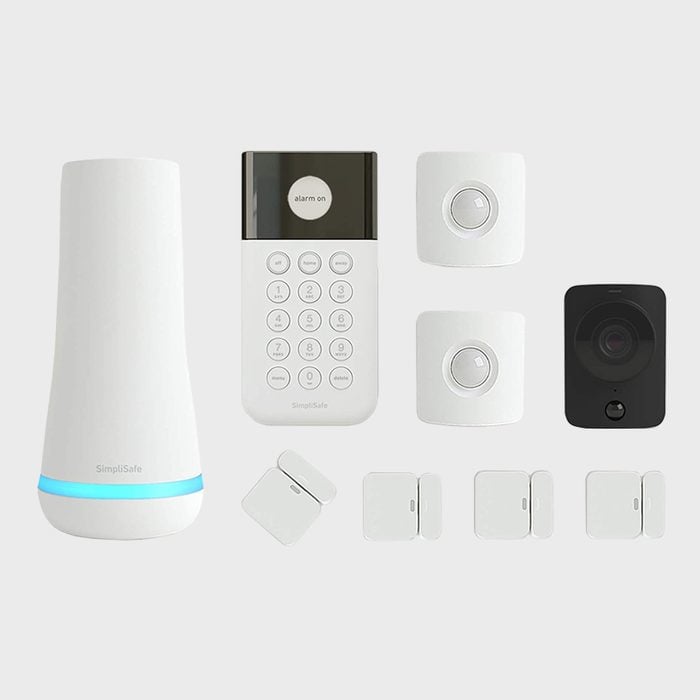
SimpliSafe 9 Piece Wireless Home Security System
Best for: Apartments, smaller homes
Martin recommends DIY systems such as SimpliSafe to meet the needs of people in apartments and condos. The SimpliSafe 9 Piece Wireless Home Security System has all the basics covered with video cameras, sensors, a keypad, and a base station with a built-in siren.
But if you opt for a professionally installed system, here’s what your installer won’t tell you.
Pros:
- Compatible with Alexa and Google Assistant
- Doesn’t require a contract
- Can be self-installed
Cons:
- May not be adequate for larger homes
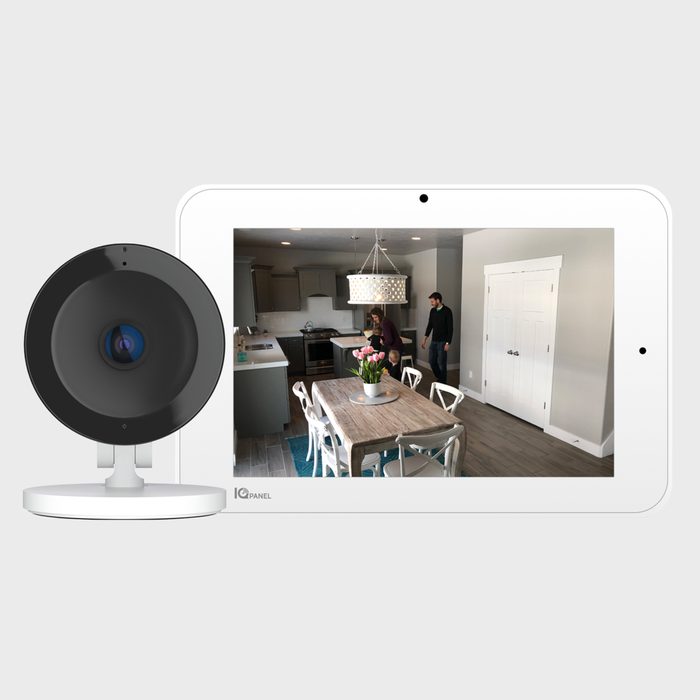
Quality Of Life Systems (QOL SYS)
Best for: Larger homes
Larger homes need additional security, which means a more complex, professionally installed system. Martin recommends Quality Of Life Systems (QOL SYS) to his friends, family, and associates. It’s also what he personally uses in his own home. This smart home system includes a live video answering system for your doorstep, Bluetooth disarming, light automation, voice activation, smart locks and thermostat, encrypted security, and a mobile app to manage it all.
However, if you’re more concerned with the security of your smartphone, you should know about these top mobile security threats.
Pros:
- One of the most comprehensive systems available
- Includes smart home features
Cons:
- Costly
- Requires professional installation
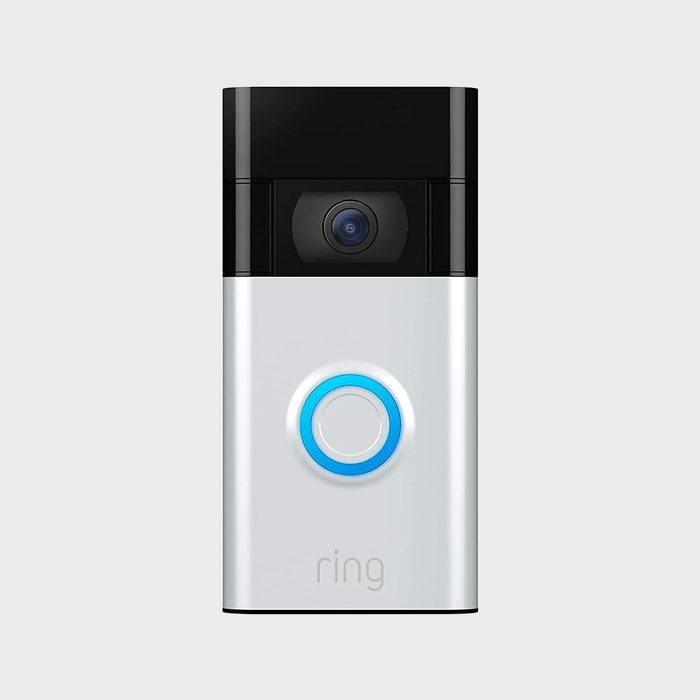
Ring Video Doorbell
Best for: Renters and apartments
Martin describes the Ring Video Doorbell as an easy way to immediately make your apartment more secure. This device has a video camera and motion sensor so you can easily see who is at your door, whether it’s a friend, a delivery, or a potential intruder, right from your smartphone.
If you’re considering installing other cameras, here are some places that smart homeowners install security cameras.
Pros:
- Easy to install
- Convenient to use
Cons:
- Requires subscription plan
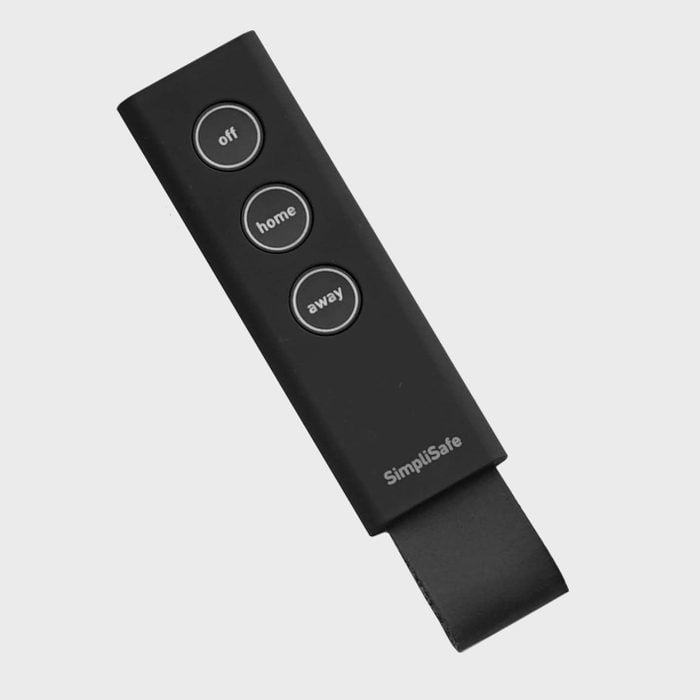
SimpliSafe KeyFob
Best for: People living alone, single moms
Martin recommends having additional panic buttons connected to your security system to easily arm or disarm your system if you’re away from the main panel. “I especially like it for my female clients who are living by themselves or single moms,” he says. The SimpliSafe KeyFob even has a button that can alert the monitor center if you’re having an emergency.
Pros:
- Easy to use
- Can be mounted on a wall
Cons:
- Doesn’t have a metal key ring
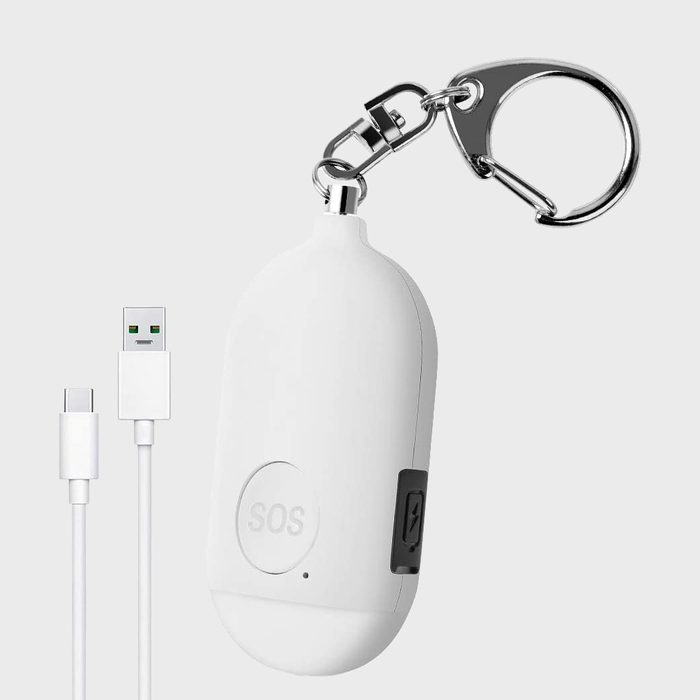
Evershop Personal Alarm
Best for: Security on the go
If you don’t have a home alarm system or just want to give yourself an extra level of protection when you’re outside, consider using an Evershop Personal Alarm. This handheld device makes a loud noise that reaches 130 decibels and has a flashing light that can be seen up to 300 yards away. Keep it on your keys so safety is always within reach.
You should also keep in mind these ways to stay safe while traveling solo.
Pros:
- Inexpensive
- Portable
Cons:
- Doesn’t call 911
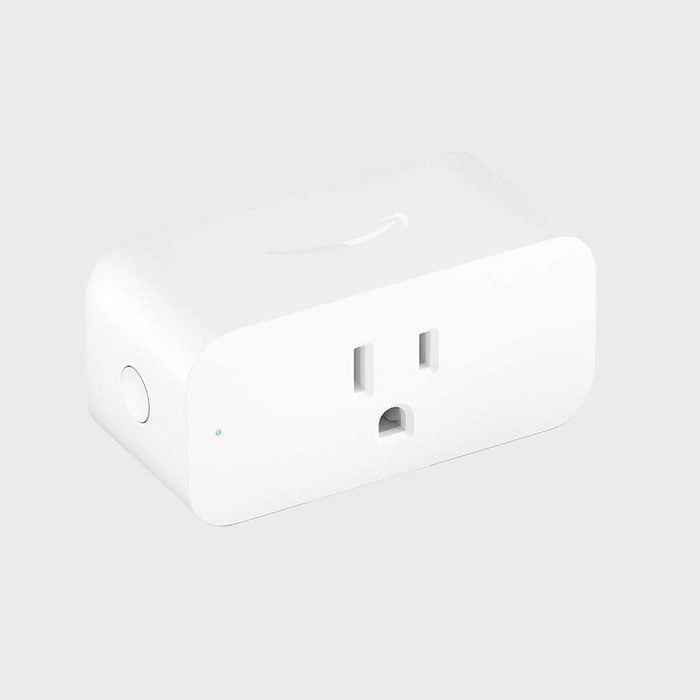
Amazon Smart Plug
Best for: Frequent travelers or those who work long hours away from home
You never know when thieves are scoping out your house, but this simple tool can help mimic home activities while you’re away. The Amazon Smart Plug can schedule televisions, fans, lights, etc. to operate on a schedule from your smartphone, making it look as if you are home.
But even if you have a professional security system, it’s essential to know the things home security installers never do.
Pros:
- Affordable,
- Remote access
Cons:
- Doesn’t connect to your security system
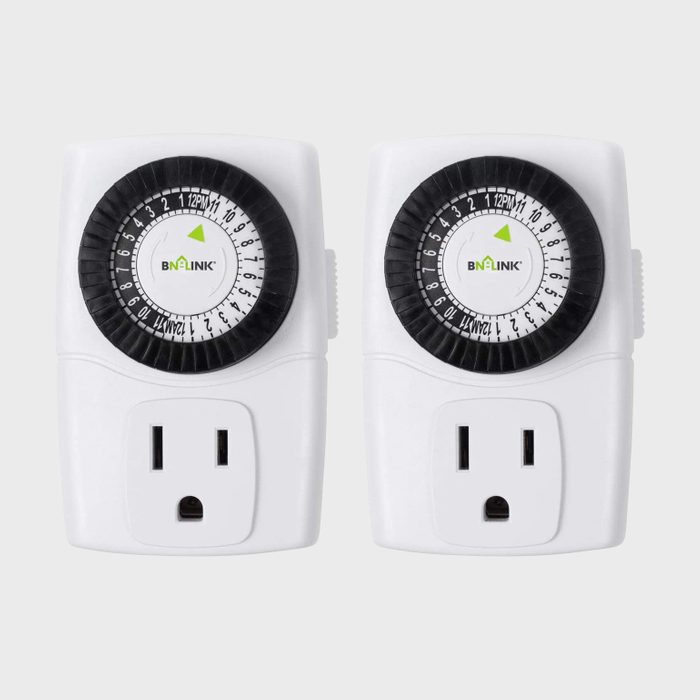
BN-LINK 24-Hour Mechanical Outlet Timer
Best for: Senior citizens
This timer is another helpful tool to help deter robbers. Because it doesn’t require a smartphone, it’s a great product for senior citizens or those who are less tech-savvy. Simply turn the dial to set a schedule for anything plugged into the timer.
Going away on a long vacation? Don’t forget to do these 13 things before you leave.
Pros:
- Affordable
- Comes in a two-pack
- User-friendly manual function
Cons:
- Not connected to a larger security system
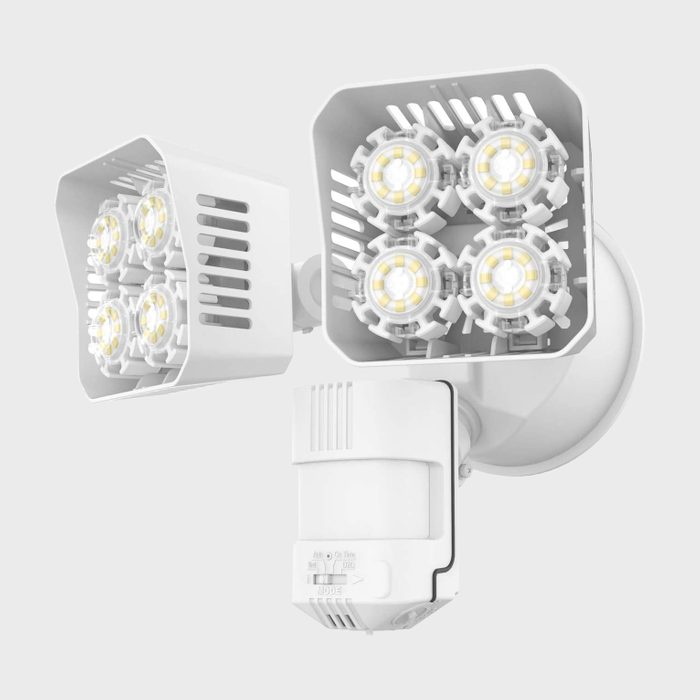
SANSI Security Motion Sensor Outdoor Lights
Best for: Private homes
Perimeter and motion-activated lighting is a great way to scare off criminals who want to break in during the night. Be sure to install these LED floodlights in both the back and front of your property. They last for more than 50,000 hours or about five years!
Speaking of, here are 13 ways your yard is giving burglars clues.
Pros:
- Easy to use
- Motion-operated
Cons:
- Must monitor battery
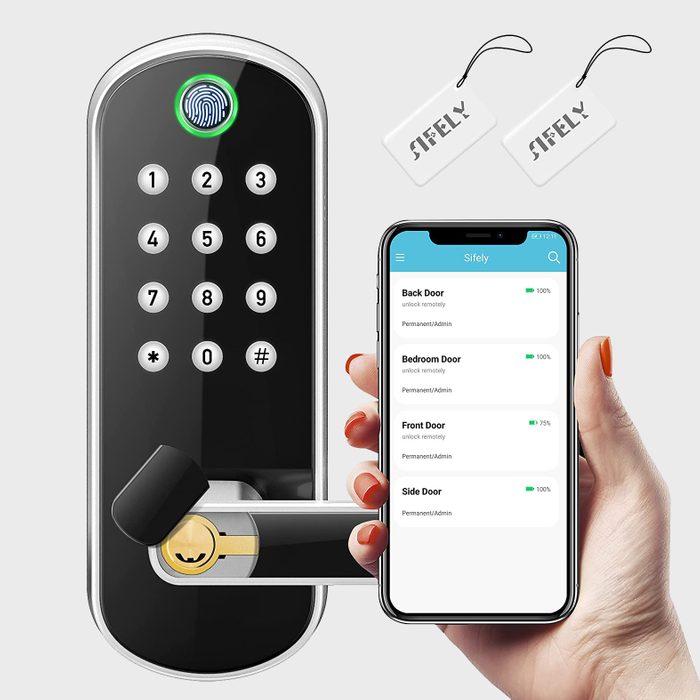
Sifely Keyless Entry Door Lock
Best for: Condos, apartments, and rental properties
A smart lock can provide more safety than a traditional lock in several ways. Not only is this lock pick proof, but you can easily change the passcode on the app. That means you can safely share your passcode with visitors, dog walkers, etc., without worrying about it falling into the wrong hands. You can also use your fingerprint in place of a passcode.
Picking a lock isn’t the only way that robbers can break in. Here are seven sneaky ways burglars can get into your home.
Pros: Installs without a locksmith
Cons: Can be problematic if you don’t have good Wi-Fi

BDF Window Film
Best for: Family homes, first floor apartments, condos
Breaking your windows is just one way burglars can get into your home. BDF Window Film prevents windows from shattering, holding shards in place and stopping crooks straight in their tracks. It also doubles as 99 percent protection from UV rays.
Pros:
- Inexpensive
- Easy to install
Cons:
- Damage control, not a deterrent
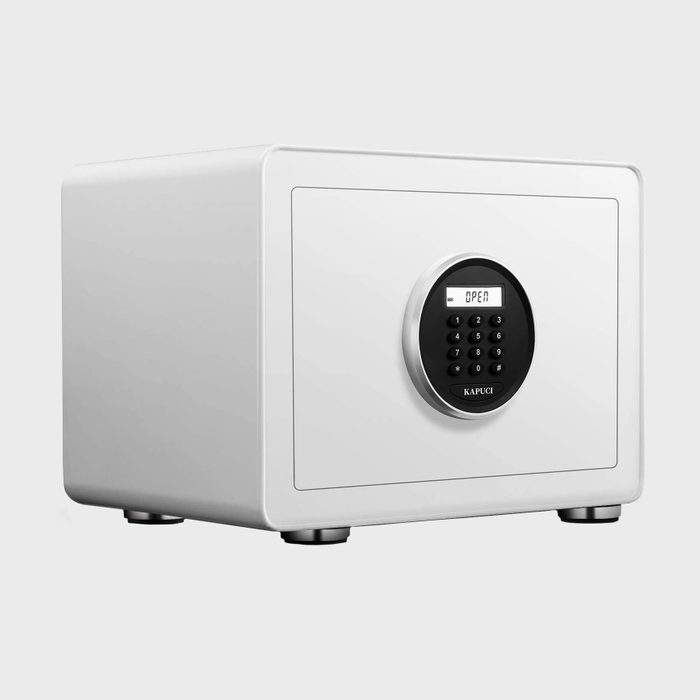
Kapuci Auto-Open Safe
Best for: Securing small items
If your home is broken into, you can still save smaller items like jewelry, paperwork, and passports from being taken with a safe. For maximum security, bolt down your safe or hide it someplace where criminals aren’t likely to find it.
Need more safe options? Check out the safes home security experts use. Not sure what to keep in your safe? Here are 13 things you’ll regret not keeping properly locked up.
Pros: Assures some items can’t be stolen
Cons: Doesn’t deter criminals
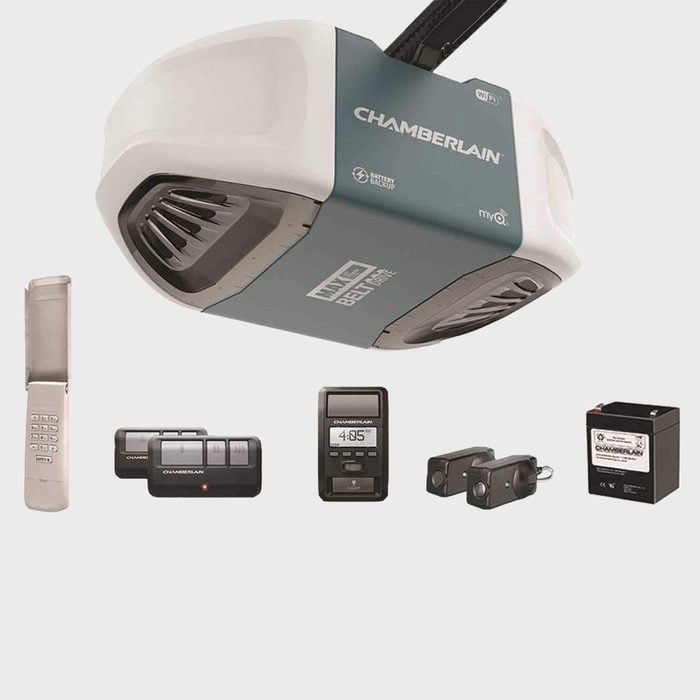
Chamberlain Smart Garage Door Opener
Best for: Homes with garages
Many of us forget to close our garages after bringing in groceries or unpacking our cars. This is essentially an invitation for burglars to come in. The Chamberlain B970T Smart Garage Door Opener with Battery Backup allows you to open and close your garage door from anywhere via your smartphone and even works during power outages.
If you want to focus your home security on the area most likely to be targeted, this is the room burglars break into first.
Pros: Works remotely via app
Cons: Doesn’t deter criminals
Next, learn how to stop porch pirates from stealing your packages.
Sources:
- Russell Stuart, managing director of Force Protection Agency
- Thomas G. Martin, private investigator and former federal agent
